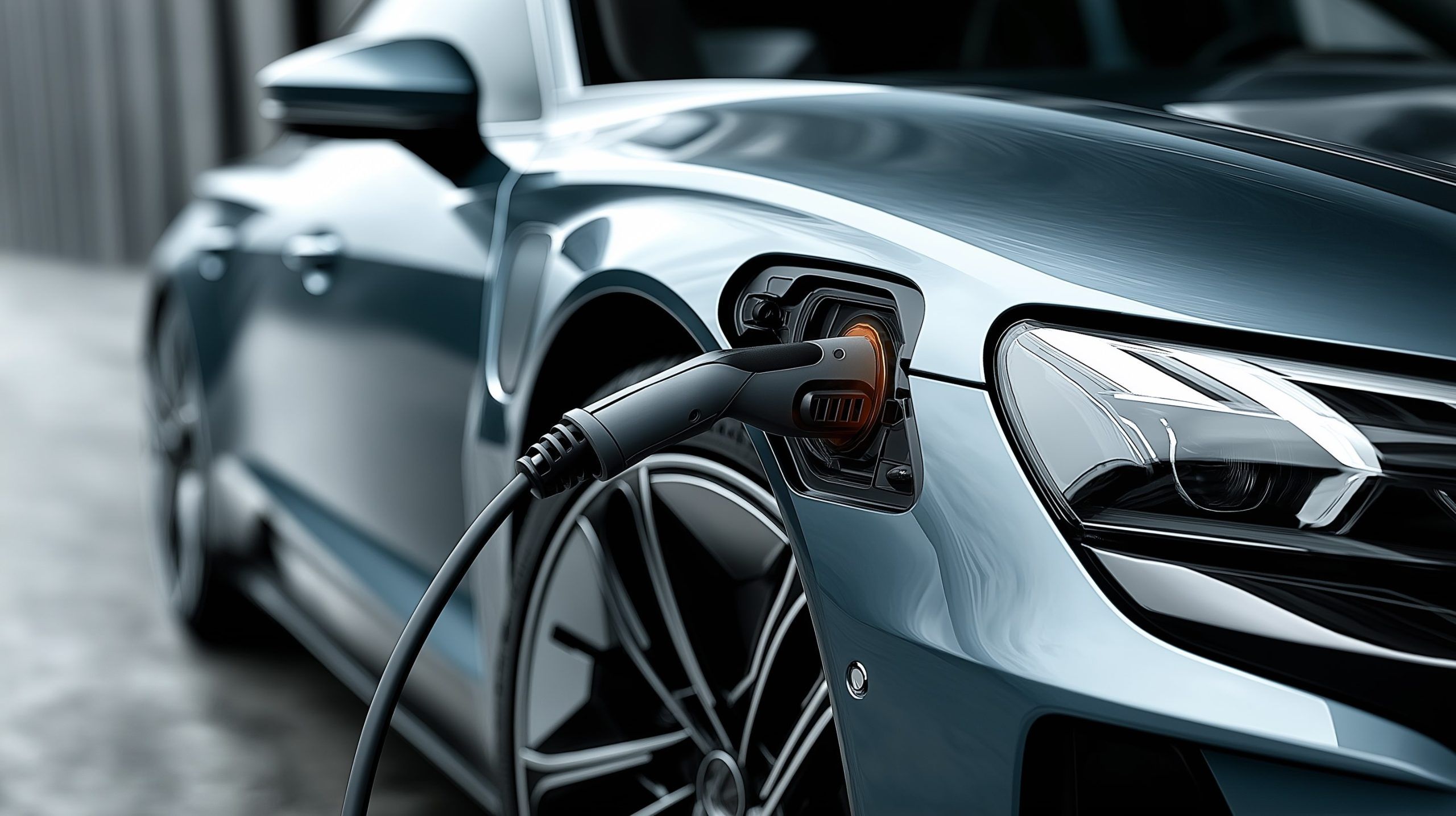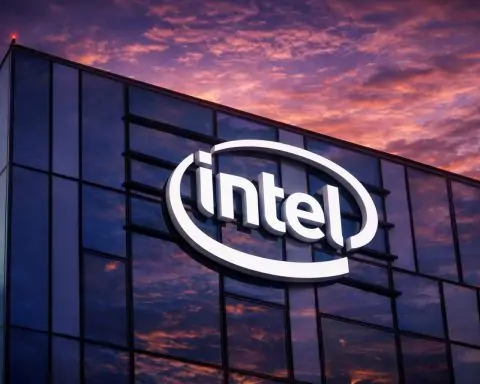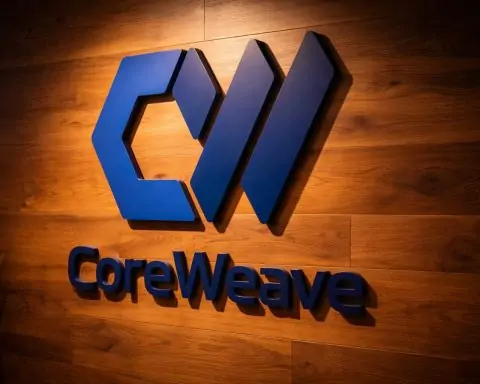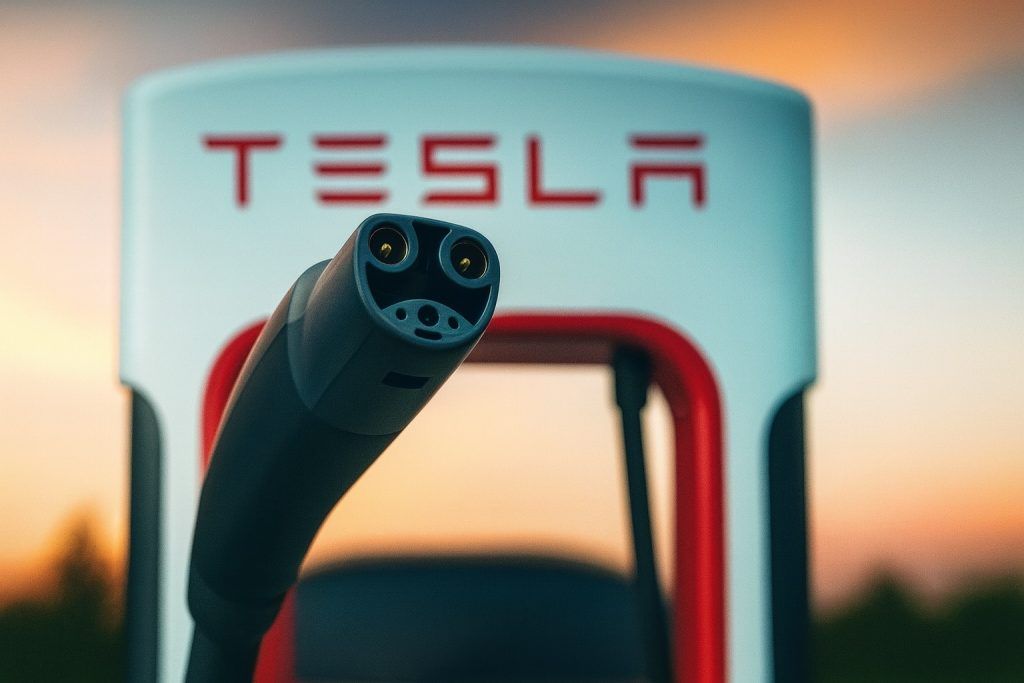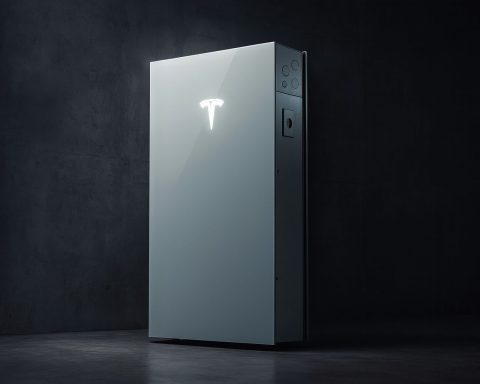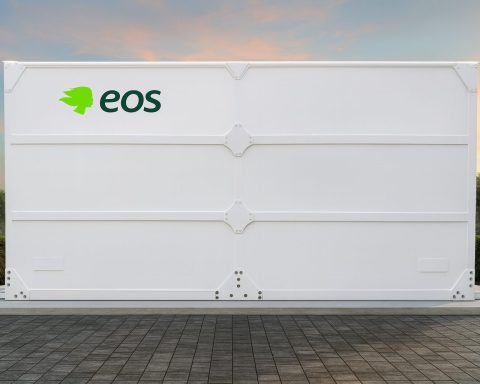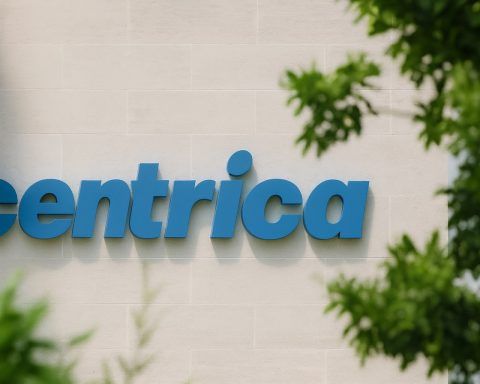- CATL unveiled the world’s first mass-produced sodium-ion EV battery, named Naxtra, in 2023 and began deploying it in cars by late 2023.
- Sodium-ion cells typically deliver 140–160 Wh/kg, with CATL’s best prototypes around 175 Wh/kg and a second-generation cell expected to exceed 200 Wh/kg.
- All-solid-state lithium batteries are projected to store 50% to 100% more energy than today’s Li-ion, with Toyota claiming a 20% initial range boost for its solid-state packs due in 2027–28.
- Solid-state designs could enable 600–1000+ miles per charge, according to industry projections and Toyota’s statements.
- Lithium-sulfur cells have a theoretical energy density of 600–800 Wh/kg, Fraunhofer’s semi-solid Li-S prototype around 700 Wh/kg, and Lyten has demonstrated about 300–350 Wh/kg in recent Li-S test cells.
- Solid-state manufacturing remains the costliest among these technologies today, though mass production in the late 2020s is expected to close the gap.
- By 2025, sodium-ion cells are expected to appear in mass-market products globally as production scales up from CATL’s 2023 deployment.
- Sodium-ion pack costs are around $77/kWh today, with CATL targeting about $40/kWh after mass production.
- CATL’s Naxtra sodium-ion EV battery reportedly can achieve over 10,000 cycles.
- LG Energy Solution demonstrated a Li-S powered drone and plans to mass-produce Li-S batteries by 2027.
Sodium-Ion vs All-Solid-State Lithium vs Lithium-Sulfur Batteries
Lithium-ion batteries have powered our devices and electric cars for decades, but they come with drawbacks – from safety risks to expensive, scarce materials and environmental costs in mining and recycling. This has spurred a global hunt for better battery technologies. Three contenders leading the charge are Sodium-Ion batteries, All-Solid-State Lithium batteries, and Lithium-Sulfur batteries. Each promises unique advantages – whether it’s sodium’s low cost and abundance, solid-state’s high energy and safety, or lithium-sulfur’s ultra-high capacity. At the same time, each faces its own challenges before it can dethrone today’s Li-ion cells. Below, we delve into an in-depth comparison across all the important dimensions – energy density, safety, cost, longevity, environmental impact, scalability, and manufacturing hurdles – backed by the latest developments and expert insights.
Energy Density: How Much Energy Can They Store?
Energy density determines how far an electric vehicle can drive or how long a device can run on a single charge. Here’s how the three technologies stack up:
- Sodium-Ion Batteries: Current sodium-ion cells have a lower energy density than lithium-ion. They typically deliver around 140–160 Wh/kg, versus ~150–220 Wh/kg for standard lithium-ion cells [1]. The best sodium-ion prototypes (e.g. CATL’s new “Naxtra” battery) reach about 175 Wh/kg – comparable to today’s LFP (lithium iron phosphate) batteries [2]. This lower energy content means a sodium-powered electric car would have a shorter range than a similar lithium-ion car. Researchers are working to improve this; in fact, CATL is already developing a second-generation sodium-ion cell expected to exceed 200 Wh/kg [3]. Still, sodium-ion will likely remain the lowest in energy per weight among these three.
- All-Solid-State Lithium Batteries: Solid-state designs aim to surpass conventional lithium-ion’s energy density by using a metallic lithium anode and dense solid electrolytes. Experts estimate solid-state batteries could pack 50% to 100% more energy than today’s lithium-ion cells [4]. Nobel-winning battery pioneer Stanley Whittingham has noted that lithium-metal solid-state technology could boost energy density by “50% if not 100%,” calling it potentially “a breakthrough for electric vehicles” [5]. Automakers are optimistic: Toyota, for example, claims its first solid-state EV battery (due in 2027-28) will improve driving range by 20% initially, with next-gen versions aiming for 50% more range than even its best upcoming lithium-ion packs [6]. In practical terms, that could mean electric cars running 600–1000+ miles on a charge – something unattainable with current batteries [7] [8]. Solid-state thus promises the highest energy density in the long run (apart from lithium-sulfur’s theoretical ceiling), if its development hurdles can be overcome.
- Lithium-Sulfur Batteries: Lithium-sulfur (Li-S) chemistry has the highest theoretical energy density by far. Sulfur can hold many lithium ions, giving it up to 5–9 times the capacity of lithium-ion materials [9] [10]. In theory, Li-S batteries could reach 600–800 Wh/kg or more, blowing past other technologies. In practice, they haven’t hit those numbers in commercial cells yet, but progress is steady. Researchers at Fraunhofer presented a semi-solid Li-S prototype projected around 700 Wh/kg [11], and startups like Lyten already demonstrated ~300–350 Wh/kg in recent Li-S test cells [12] [13]. Such energy density could double an EV’s range for the same weight battery [14]. It’s no surprise experts call Li-S the potential “holy grail of energy storage” – if its technical issues are solved [15].
Bottom Line: Lithium-sulfur offers unmatched energy capacity on paper, and solid-state batteries also promise a major jump in energy density. Sodium-ion’s energy content, while improving, will remain more modest. This suggests sodium-ion will serve best in applications where range is less critical (like short-range EVs or grid storage), whereas solid-state and Li-S technologies target the high-energy demands of future long-range electric vehicles and aircraft [16].
Safety: Which Battery Is Safest?
Battery safety is paramount – we’ve all seen headlines of lithium-ion fires. New technologies address safety in different ways:
- Sodium-Ion: Sodium-ion batteries are generally considered safer than standard lithium-ion. For one, they can be completely discharged to 0 volts without damage, making them safer for transport and storage [17]. They also don’t use lithium metal, which means less risk of the kind of runaway overheating that caused incidents like the Galaxy Note 7 fires [18]. A recent industry report lists improved safety as a key sodium-ion benefit [19]. While sodium cells still use flammable liquid electrolytes, their lower energy density and chemistry lead to a lower heat output if something goes wrong. In short, they’re more forgiving and intrinsically safer in operation [20].
- All-Solid-State: Solid-state batteries are often touted as the safest option. By replacing the volatile liquid electrolyte with a stable solid electrolyte, they virtually eliminate the risk of leakage or fire – the cells are non-flammable under normal conditions [21]. The solid electrolyte also suppresses lithium dendrites (tiny metal filaments that can cause shorts), further reducing fire risk [22]. “Solid-state batteries…effectively reduce the risk of lithium dendrite formation,” notes Pritzker School of Molecular Engineering professor Shirley Meng [23]. In testing, QuantumScape’s solid-state cells showed no dangerous thermal events even when pushed hard [24]. Overall, solid-state designs offer a leap to “intrinsic safety,” as CATL describes it [25]. The main caveat is that this safety comes once the technology is mature – current prototypes are small-scale; scaling them up safely is part of the ongoing challenge.
- Lithium-Sulfur: On the safety front, lithium-sulfur is a bit of a mixed bag. On one hand, Li-S cathodes use sulfur, a benign and non-toxic element (as opposed to cobalt or nickel). And unlike metal-oxide cathodes, sulfur doesn’t release oxygen at high temperatures, which could make fires less likely. However, Li-S batteries often employ a lithium metal anode and liquid electrolyte – a combination known to be fire-prone if mishandled (lithium metal is highly reactive). In essence, a Li-S cell can carry similar or even greater fire risk than a lithium-ion until its design is improved. The good news is that some Li-S developers are actively improving safety. For example, Lyten uses a special “3D” lithium composite anode that significantly raises the thermal runaway ignition point (from ~125 °C to 236 °C in their tests) [26]. Such innovations indicate Li-S batteries can be made much safer than early prototypes. Still, until solid electrolytes or other safeguards are implemented in Li-S, their safety level will likely be comparable to conventional lithium-ion – requiring robust battery management to prevent overheating.
Bottom Line: Solid-state batteries take the lead in safety by design – no liquid means far less fire hazard. Sodium-ion cells also score high on safety with their stable behavior and ability to sit at zero charge without incident [27]. Lithium-sulfur’s safety will improve with new designs, but as of now it must be managed similarly to current lithium batteries. In any case, all three contenders aim to deliver safer alternatives to today’s Li-ion packs, a welcome relief for consumers and manufacturers alike.
Cost: Which Is Cheapest to Produce?
Cost is a critical factor for any new battery – materials and manufacturing must beat (or at least meet) lithium-ion economics to see wide adoption. Here’s how the costs compare:
- Sodium-Ion: A major appeal of sodium-ion technology is low cost. Sodium is one of Earth’s most abundant elements – roughly 1000 times more common than lithium in the crust – and it’s cheap. “Sodium is a more sustainable battery material than lithium,” says James Quinn, CEO of Faradion, noting it’s widely available and “takes 682 times less water to extract 1 ton of sodium than lithium” [28]. Moreover, sodium-ion batteries can use cheaper components: for example, aluminum current collectors instead of copper (saves money) and cathodes without expensive metals like cobalt. Estimates put current first-generation sodium cell costs around $77 per kWh, already below typical lithium-ion costs [29]. With mass production, CATL expects costs to drop near $40/kWh – half the cost of today’s cheapest LFP batteries [30]. Manufacturing can also leverage existing Li-ion factory setups with minimal retooling [31], which keeps capital expenses down. All this means sodium-ion could become an ultra-affordable solution, especially for stationary storage and budget EVs where low cost per kWh matters more than maximum performance.
- All-Solid-State: Solid-state batteries are currently the most expensive to develop. They use advanced materials (e.g. ceramic or sulfide electrolytes, lithium-metal foil anodes) and often require new manufacturing processes (like vacuum deposition or high-pressure sintering) that haven’t benefited from economies of scale yet. As of now, producing solid-state cells costs far more per kWh than conventional batteries – one reason we don’t see them in products yet. “The manufacturing cost is still higher than that of lithium-ion batteries,” Professor Shirley Meng cautions [32]. However, costs are expected to fall as companies refine production. By eliminating the graphite anode and using less bulky safety packaging, solid-state designs might eventually lower materials cost per cell. QuantumScape’s CEO Jagdeep Singh, for instance, envisions that their anode-free design could simplify manufacturing and reduce costs once scaled (since you effectively print a thin solid electrolyte and add lithium, rather than assembling many layers of materials) [33] [34]. Toyota also projects a 20% cost reduction for its first solid-state packs compared to today’s tech [35] [36] – though this likely assumes high-volume production and technical breakthroughs. In short, solid-state is pricey in the short term, but mass production (late 2020s) could narrow the gap. Many automakers are willing to pay a premium initially for the performance benefits, expecting costs will drop as factories ramp up.
- Lithium-Sulfur: Lithium-sulfur has the potential to be the cheapest of all in material terms. Why? Sulfur is dirt cheap and plentiful – it’s often a waste byproduct from oil refining. “Sulfur is the ideal cathode material… it’s abundant, dispersed around the globe, easily minable…for many industries it’s actually a waste product,” explains Rob Murano of battery developer Coherent [37]. He compares the raw material cost: sulfur adds only about $0.07 per kWh, versus $30–40/kWh for the nickel/manganese/cobalt in NMC cathodes, or $10–15/kWh for LFP cathodes [38] [39]. That translates to a potential 50–70% reduction in pack cost. “When we look at the price that Li-S cells can achieve, it drops below LFP,” adds Celina Mikolajczak, Chief Battery Tech Officer at Lyten [40]. In fact, if Li-S reaches commercial maturity, experts predict its battery packs could cost one-half to one-third as much as today’s lithium-ion packs of equivalent size [41]. However, the caveat is that current Li-S prototypes have short lifespans – if a battery dies early, you lose the cost advantage by needing replacements. So the real cost-effectiveness of Li-S depends on solving the longevity issues (more on that below). The encouraging news is that companies like Lyten plan mass production with confident cost targets, implying they believe they can deliver both low cost and acceptable life. If that happens, lithium-sulfur could become the go-to low-cost battery, especially for large-scale applications where material cost dominates.
Bottom Line:Sodium-ion is already showing a cost advantage thanks to cheap, abundant inputs and compatibility with existing manufacturing – making it a front-runner for economical energy storage [42] [43]. Lithium-sulfur could ultimately be even cheaper per kWh, thanks to ultra-low material costs, but it must overcome technical hurdles to realize that promise [44] [45]. Solid-state is expensive today but expected to become cost-competitive as production scales; early adopters may pay more for its benefits, with costs falling significantly by the time it’s mass-produced late this decade [46]. In sum, all three aim to beat lithium-ion on cost in the long run – a crucial factor for widespread adoption.
Longevity and Life Cycle: Which Lasts Longest?
A battery that holds more charge is great – but not if it dies after a few charge cycles. Longevity (cycle life) is another key comparison point:
- Sodium-Ion: Sodium-ion batteries can deliver solid cycle life, though initially it lagged behind lithium-ion. Early sodium cells struggled with shorter lifespans, but recent improvements have been significant. Today’s sodium-ion batteries can endure on the order of 5,000 charge/discharge cycles before significant capacity loss [47]. This is approaching the level of lithium iron phosphate (LFP) cells, which can do ~8,000+ cycles in some designs [48]. In fact, Chinese scientists recently pushed a sodium battery to 6,000 cycles by using advanced electrode materials [49]. And CATL claims its latest Naxtra sodium-ion EV battery can achieve over 10,000 cycles – which is on par with or even better than the most durable lithium-ion chemistries [50]. (For context, 10,000 cycles in an EV could equate to well over a million miles of driving.) If those numbers hold in real use, sodium-ion’s longevity will be excellent. One thing to note: sodium-ion may have a slightly faster self-discharge and a lower optimal charge rate than some Li-ion cells [51] [52], but overall its lifespan is becoming a strong suit. With further development, sodium batteries are expected to easily last a decade or more in grid storage service, and handle the life of a typical car.
- All-Solid-State: Solid-state batteries initially had a reputation for limited cycle life due to issues like interface degradation or dendrites sneaking through the solid electrolyte. However, recent breakthroughs suggest long lifespans are achievable. QuantumScape’s early tests showed their cells could be recharged to 80% in 15 minutes and still last hundreds of thousands of miles in EV use [53] – indicating cycle counts well into the thousands. Toyota acknowledged that previously, solid-state prototypes suffered shorter life, but the company announced in 2023 that it has “achieved technological advancements to overcome this [short life] challenge” [54]. They are now confident enough to focus on mass production by 2027-28 with durability suitable for vehicles. Another solid-state developer, Solid Power, has reported thousands of stable cycles in its test cells using a sulfide electrolyte. While exact cycle numbers aren’t publicly confirmed, Stanley Whittingham’s praise of QuantumScape’s data – “I have not seen data this good anywhere else” [55] – hints that longevity might no longer be a showstopper. That said, proving long life in large, automotive-scale cells is the next step. The consensus in the industry is that a well-engineered solid-state battery should at least match or exceed current lithium-ion’s cycle life, thanks to its stable solid electrolyte (which doesn’t degrade as quickly as liquid electrolytes over time) [56]. We’ll know for sure once prototypes enter real-world testing in coming years.
- Lithium-Sulfur: Cycle life has been the Achilles’ heel of Li-S batteries. Traditional Li-S cells could barely last a few dozen cycles before losing most of their capacity [57] [58]. The culprit is the “polysulfide shuttle”: intermediate sulfur compounds dissolve into the electrolyte during cycling and wreak havoc, causing rapid degradation [59]. As a result, “Li-S cells don’t usually survive many cycles”, as one industry report flatly noted [60]. However, intensive R&D is steadily extending Li-S lifespan. By 2021, some researchers had boosted Li-S to hundreds of cycles, albeit often by sacrificing other factors [61]. Fast forward to 2024: Lyten reported its latest Li-S prototype cell could do 250–300 cycles at full depth of discharge (100% swings) and still retain 70% capacity [62]. Under gentler usage (e.g. partial 20% depth cycles), they even saw 2,000 cycles with minimal fade [63]. This is a dramatic improvement, essentially a doubling of cycle life each year for the past few years. “In a couple years, can we achieve 1,000 cycles? We think so,” said Lyten’s Celina Mikolajczak, expressing confidence in continued progress [64] [65]. Academic breakthroughs support this optimism: a team at University of Michigan recently used a Kevlar-fiber membrane to arrest the polysulfide shuttle, enabling 1,000-cycle Li-S cells in the lab [66] [67]. These advances suggest that lithium-sulfur may soon reach the 500–1,000 cycle range needed for practical use. That would be sufficient for many applications (for example, 1,000 deep cycles could equate to ~300,000 miles in an EV). Still, Li-S will need to prove it can approach the multi-thousand-cycle longevity of lithium-ion for truly mainstream adoption. Its calendar life (shelf-life over years) is also an area being studied, though early results indicate that after an initial capacity drop in the first month, Li-S cells can hold charge for months without major loss [68].
Bottom Line:Sodium-ion and solid-state batteries are both showing the ability to meet or exceed the cycle life of today’s lithium-ion – with thousands of cycles attainable [69] [70]. Lithium-sulfur started far behind, but aggressive innovation has pushed it closer to viability, with hundreds of cycles demonstrated and a realistic path to thousand-cycle life in the near future [71] [72]. In terms of longevity, all three contenders are on track to deliver batteries that can last the lifetime of a typical device or vehicle – though Li-S is still the one to watch for further improvements.
Environmental Impact: Which Is Greenest?
Beyond performance and cost, it’s crucial to ask: how do these batteries affect the environment? From resource extraction to end-of-life, here’s how they compare:
- Sodium-Ion: Sodium-ion batteries score very well on environmental factors. The most obvious advantage is that sodium is abundant and widely available – unlike lithium, it isn’t concentrated in a few countries or tied to intensive mining in fragile ecosystems. Extracting sodium (often from salt or brine) is far less water-intensive than extracting lithium from salt flats. In fact, producing lithium can require hundreds of times more water than producing an equivalent amount of sodium [73]. This dramatically lower water use makes sodium-ion technology more sustainable and community-friendly in mining regions. Moreover, sodium-ion cells typically use no cobalt or nickel, relying on materials like iron, manganese, or Prussian Blue analogs for cathodes. This avoids the well-documented environmental and ethical issues around cobalt mining (e.g. in the Congo). Even the anode can be eco-friendlier: sodium-ion uses hard carbon (often derived from biomass waste) instead of graphite, and it allows aluminum current collectors (which are easier to recycle than copper and whose production has a different, often lower, environmental footprint) [74]. Finally, the ability to retrofit existing battery factories for sodium production [75] means we don’t have to build entirely new supply chains from scratch – reducing the carbon footprint of scaling up. All told, sodium-ion is frequently cited as a more environmentally friendly alternative to lithium-ion [76], delivering decent performance without the heavy toll of rare metal mining.
- All-Solid-State Lithium: Solid-state batteries share some environmental similarities with current lithium-ion, since they still use lithium and often similar cathode metals (like nickel, manganese, etc., depending on the design). This means they don’t eliminate the need for lithium mining or the use of energy-dense metals. However, there are some green benefits. First, because solid-state cells can pack more energy in less material (higher energy density), you need fewer raw materials per kWh of storage achieved. For example, if a solid-state battery is 50% more energy-dense, an EV might need 2/3 the battery mass for the same range – potentially cutting the total materials (and mining) needed for that pack. Second, solid-state batteries improve safety and longevity, which has environmental upsides: a battery less prone to catching fire or degrading means fewer replacements and less electronic waste over time. Also, their non-flammable nature could simplify recycling (no risk of fires during crushing/shredding of old cells). On the flip side, producing some types of solid electrolytes can involve energy-intensive processes or novel chemicals (like sulfides that must be handled carefully to avoid releasing toxic gas). A full life-cycle analysis (LCA) shows solid-state cells can have lower environmental impact, especially if they enable lighter EVs that use less energy. But it largely depends on the specific chemistry. Notably, if solid-state tech allows wider use of cobalt-free cathodes (like high-nickel or even lithium iron phosphate in a solid format), that would eliminate cobalt’s issues entirely. Some companies are indeed exploring cobalt-free solid-state designs. In summary, solid-state batteries should be cleaner in use (thanks to safety and lifespan) but still rely on lithium and mining-intensive metals – so their green credentials hinge on material choices and recycling advancements. They are an evolutionary improvement environmentally, rather than a radical departure.
- Lithium-Sulfur: Lithium-sulfur batteries offer compelling environmental advantages due to their materials. The cathode is sulfur, which is cheap, non-toxic, and extremely abundant – often obtained as a waste product from petroleum refining and natural gas processing [77] [78]. Using sulfur in batteries effectively repurposes industrial waste into clean energy storage, a big win for sustainability. Li-S cells also contain no cobalt, nickel, or manganese [79], avoiding the mining of those heavy metals and associated pollution. This means a future EV with a Li-S pack would not be tied to conflict minerals or environmentally damaging nickel and cobalt mines. Additionally, sulfur’s abundance means a more localized supply chain; as Celina Mikolajczak notes, “You can pretty much make Li-S cells on any continent with a local supply chain” [80] – reducing the carbon footprint from long-distance materials shipping. On the anode side, Li-S does use lithium metal, so it shares the lithium extraction impact with other lithium-based batteries. However, because Li-S has such high energy per weight, it might use less lithium per kWh of storage than current lithium-ion (which needs excess lithium in cathodes and anodes). There’s also some evidence Li-S cells could be more tolerant of temperature extremes [81], which might make them more efficient in various climates (indirectly an environmental plus). The main environmental downside for Li-S comes if the cycle life is low – a battery that must be replaced frequently creates more waste and resource usage. As discussed, though, improvements aim to get Li-S cycle life on par with others. If successful, a Li-S battery could be one of the greenest options: its primary active material is essentially a recyclable byproduct, and eliminating hard-to-source metals makes it more sustainable. In fact, one could argue Li-S moves energy storage closer to a circular economy model: using abundant elements and recyclables (like sulfur and even recycled carbon in some designs) to power the future.
Bottom Line: All three alternatives seek to be more environmentally friendly than current lithium-ion batteries, but in different ways. Sodium-ion is a star in sustainability due to cheap, abundant materials (sodium, iron) and minimal water use in extraction [82]. Lithium-sulfur is likewise attractive for its use of sulfur (turning waste into value) and avoiding conflict metals [83] [84]. Solid-state lithium doesn’t change the raw material mix as dramatically, but its efficiency and safety improvements contribute to greener outcomes over a battery’s life. Importantly, all three could reduce reliance on scarce, problematic elements (like cobalt) and enable more recyclable, widely sourced supply chains – a positive shift as the world scales up battery production.
Scalability and Industry Adoption: How Soon and Where?
A battery breakthrough in the lab is exciting – but the real question is how soon can these technologies be produced at scale and reach the market? Here’s a look at scalability and the latest industry moves for each:
- Sodium-Ion: Among the three, sodium-ion is happening now. It is already entering mass production in 2023-2024. Chinese battery giant CATL unveiled the world’s first mass-produced sodium-ion EV battery (called “Naxtra”) in 2023 and began integrating it into electric cars by late 2023 [85] [86]. For instance, Chery Automobile announced its new iCAR electric mini-SUV will use CATL’s sodium-ion packs, and BYD (another major EV battery player) is rolling out sodium-ion batteries in its low-cost models like the BYD Seagull [87] [88]. Notably, these companies are initially using hybrid battery systems – mixing sodium-ion and lithium-ion cells in one pack – to balance the pros and cons [89]. This “dual chemistry” approach allows EVs to benefit from sodium’s low cost and cold-weather performance while still getting a boost in range from some lithium cells. It underscores that sodium-ion is seen as complementary to lithium-ion, not necessarily a total replacement in cars. Beyond vehicles, sodium-ion is scaling fast for stationary energy storage (grid batteries), where its lower energy density isn’t a big issue but low cost and long life are huge advantages [90]. Companies like Natron (in the U.S.) and Faradion (UK, now owned by India’s Reliance Industries) are building out production for grid-oriented sodium-ion cells. According to Maria Forsyth of Deakin University, the cost and effort to switch a lithium battery factory to sodium is quite low, meaning “the scale of sodium battery production can be quickly expanded” [91]. Indeed, analysts note that China has ramped up a sodium-ion supply chain at impressive speed following CATL’s 2021 reveal. With multiple factories planned or under construction, sodium-ion is set to take a significant market share in niches like two-wheeled EVs, affordable cars, and renewable energy storage in the next couple of years. By 2025, we should expect to see sodium-ion batteries in a variety of mass-market products globally, marking it as the most immediately scalable among the three technologies.
- All-Solid-State: Solid-state batteries are on a slightly longer timeline, but the race to scale them is intense. Dozens of companies and carmakers are investing heavily to commercialize solid-state tech. Toyota has been a leader here – it plans to start producing solid-state batteries by 2027-28 for next-gen electric vehicles [92]. In fact, Toyota recently announced a dedicated “BEV Factory” to launch advanced EVs in 2026, and solid-state is slated for the high-performance models a year or two after that [93] [94]. Volkswagen-backed startup QuantumScape shipped out sample 24-layer solid-state cells to automotive partners in 2022 and is building a pilot production line, aiming for commercialization around 2025-2026 [95] [96]. Another player, Solid Power (partnered with BMW and Ford), is scaling a pilot line for solid-state EV cells using sulfide electrolytes; they plan to deliver automotive prototype batteries for testing and ramp up to mass production later this decade. Impressively, Solid Power claims its design could power 800,000 EVs per year by 2028 once their planned expansion is complete [97]. Other notable efforts include Samsung and Hyundai in South Korea, which have shown solid-state prototypes (Samsung unveiled a high-density cell in 2020), and a Taiwanese firm ProLogium aiming to supply car makers by the mid-2020s. While no full solid-state battery has hit the consumer market yet, progress is steady and the first real deployments might actually happen in smaller devices: for example, Samsung is rumored to use a solid-state battery in a future smartwatch as a low-stakes trial. Scaling solid-state involves overcoming manufacturing challenges (thin solid electrolyte layers, new assembly methods), but confidence is growing. “Breakthroughs in this field are constantly emerging,” writes analyst Freya Zeng, noting that what once looked like an unscalable science project is now moving toward factory reality [98] [99]. The consensus is that 2030 will see solid-state batteries in many high-end vehicles, with meaningful market presence perhaps as early as 2027 in limited models. Automakers are generally targeting the second half of the 2020s to roll out the first solid-state-powered EVs, initially in premium segments (where cost is less critical) and then broader models as production volume ramps up and costs fall.
- Lithium-Sulfur: Lithium-sulfur is a bit further from everyday use, but it’s no longer just an academic curiosity – it’s moving toward commercialization in specific applications. One exciting development: LG Energy Solution (the world’s second-largest EV battery maker) announced it has successfully test-flown a drone powered by a lithium-sulfur battery, and LG plans to mass-produce Li-S batteries by 2027 with an energy density about “twice the strength of lithium-ion batteries” [100]. This suggests LG sees a path to making Li-S viable for real products (drones today, perhaps electric aviation or EVs tomorrow). In Germany, startup Theion is actively developing Li-S cells aimed at the EV market, working on extending cycle life and managing the sulfur chemistry [101]. In the U.S., Lyten is building a 100 MWh pilot production line in 2025 and targeting a 6 GWh Li-S factory by 2027 [102] – meaning they anticipate commercial orders for things like delivery vehicles, heavy equipment, and maybe niche automotive runs [103]. And while the British Li-S pioneer OXIS Energy fell into bankruptcy in 2021 before reaching mass production, its intellectual property was acquired by Johnson Matthey, which indicates continued interest in the technology’s potential. The early adopters for Li-S will likely be sectors that need the highest energy density and can tolerate a shorter cycle life initially. Think aerospace and aviation (where weight is king) – indeed, Fraunhofer’s Susanne Doerfler highlighted that “aviation is the most promising application [for Li-S], because we need lightweight batteries, and every kilogram counts” [104]. High-altitude drones, electric aircraft, and space/satellite projects are already testing Li-S cells. For example, the HAPSMobile solar drone and others have experimented with Li-S batteries to enable ultra-long flights. As those successes accumulate, Li-S will inch closer to electric cars. We may see limited-run luxury EVs or hypercars using Li-S in the late 2020s as a showcase (where cost is no object), but broader automotive use will likely wait until the 2030s when cycle life and reliability meet mainstream standards. In summary, lithium-sulfur is scaling up gradually, about 2–3 years behind solid-state in timeline. Companies are eyeing 2025–2028 for initial production and specialized uses, with the hope that continuous improvements will open larger markets soon after. If the ongoing R&D pays off, Li-S batteries could be a game-changer for the EV industry in the next decade.
Manufacturing Challenges: What’s Holding Them Back?
Each of these battery technologies brings unique manufacturing challenges that must be overcome for them to be produced efficiently and at high quality:
- Sodium-Ion: Fortunately, sodium-ion batteries benefit from being largely manufacturing-friendly. They were designed to be a drop-in replacement, as much as possible, for lithium-ion on production lines. As Professor Maria Forsyth notes, from a factory perspective “existing lithium-ion battery factories can be slightly modified to produce sodium batteries” [105]. This means companies don’t need to invent an entirely new assembly process – they can use the same equipment for coating electrodes, assembling cells, etc., with adjustments for sodium-specific materials. The challenges that do exist include developing high-performance cathode materials (like layered oxides or Prussian blue analogs that work well with sodium) at scale – these materials are different from the well-established lithium cathodes, so supply chains are ramping up. Also, the anode for sodium-ion often uses hard carbon; producing consistent, high-quality hard carbon from sustainable sources is an area of ongoing work. Another challenge: ensuring longevity – because sodium ions are larger, they can cause more expansion in the electrode materials. Manufacturers have to fine-tune electrode designs to accommodate this without cracking or rapid degradation. Overall, though, no exotic manufacturing steps are needed for sodium-ion, and that’s reflected in the fact that multiple large battery factories in China are already being commissioned for sodium cells. We can say the manufacturing risk for sodium-ion is relatively low and one of the reasons it’s the first of these technologies to hit the market.
- All-Solid-State: Solid-state batteries face the steepest manufacturing challenges. Making a solid-state cell is quite different from making a traditional battery. The heart of it is the solid electrolyte separator – which might be a thin ceramic sheet (as in QuantumScape’s design) or a sulfide glass-like layer (as in Solid Power’s design). Ceramics need to be sintered or deposited in extremely thin layers (tens of microns or less) with no cracks or defects, which is difficult to do rapidly and uniformly at large scale. QuantumScape, for example, had to develop a proprietary manufacturing process for its ceramic separator and anode-free design [106]. Scaling that from lab-sized single layers to multi-layer pouch cells and then to mass production is an arduous task. Professor Shirley Meng has pointed out that “solid-state batteries may face greater challenges in scaling up production” – the processes are simply not as mature as winding jellyrolls of liquid-electrolyte cells [107]. Another challenge: interface engineering – getting the solid electrolyte to consistently and intimately contact the electrodes over large areas. Any tiny gap or rough spot can create resistance or let dendrites form. This often requires pressing components together under pressure or adding special interlayer coatings, complicating manufacturing. Solid-state also introduces the need for extremely dry, clean production environments (moisture can ruin certain solid electrolytes, especially Li metal and sulfides which react to form sulfide gas). Maintaining such conditions at gigafactory scale will be expensive. Lastly, testing and quality control for solid-state cells is new territory – you can’t use exactly the same high-speed formation and testing techniques used for liquid cells. All these hurdles mean that even though solid-state works in the lab, making millions of defect-free cells per year is the main barrier. Companies are tackling this by building pilot lines (QuantumScape’s QS-0 line, Solid Power’s pilot plant, Toyota’s upcoming line) to iron out kinks. The next few years will be critical to refine manufacturing. Many in the field say it’s not a question of “if” but “when” – with sufficient investment and engineering talent, the challenges will be solved, but it might take a bit longer and more capital expenditure than initially hoped. By late 2020s, we should know if they’ve cracked the code for mass-producing solid-state batteries at high yield.
- Lithium-Sulfur: Manufacturing lithium-sulfur batteries comes with its own set of challenges, mostly tied to managing the unusual chemistry. Unlike lithium-ion, which is an intercalation chemistry, Li-S is a conversion chemistry – sulfur to lithium sulfide and back – which causes huge volume changes (the sulfur cathode can expand ~78% upon full discharge) [108]. Engineering a cell to accommodate that swelling and contracting repeatedly is tough; it requires durable binders and flexible cell designs. Then there’s the notorious polysulfide shuttle – sulfur that dissolves and migrates to the anode. In manufacturing, this means extra care in cell design: often adding a separator coating or membrane to trap those polysulfides (like the Kevlar-based membrane from University of Michigan research [109]). Incorporating such membranes or advanced separators adds steps to production. Also, because sulfur is an insulator, Li-S cathodes need a lot of conductive carbon mixed in, and sometimes novel nanomaterials (e.g. Lyten’s 3D graphene structure) [110]. Mixing and coating these cathodes uniformly at scale is non-trivial – too little carbon and the sulfur won’t deliver power; too much and you lose energy density. On the anode side, using lithium metal foil is a challenge as well: lithium metal is highly reactive with air and moisture, so cell assembly must be in dry rooms, and handling thin lithium foils without damage is difficult. Some Li-S developers avoid pure lithium foil by using alternative protected anodes or prelithiation strategies, which can simplify production at the cost of more steps in material prep. Another manufacturing challenge is quality control: ensuring each cell has fully converted sulfur during formation (first charge cycles) and no residual polysulfides that could shorten life. Because no one has mass-produced Li-S before, there’s a learning curve akin to what lithium-ion went through in the 1990s – expect some trial and error. Indeed, the collapse of OXIS Energy in 2021, after building a pilot line, exemplified how reaching commercial yields and reliability for Li-S was harder than anticipated. However, the field has learned a lot since then. The fact that an industry giant like LG Energy Solution is targeting mass production in 2027 shows confidence that these manufacturing issues can be managed on that timeline [111]. They’ve likely solved many problems (perhaps using additives or semi-solid architectures to contain the sulfur). Startups like Lyten and Sion Power (which pivoted to a Li-S hybrid approach) are also developing manufacturing know-how on a smaller scale now. Expect the first Li-S factories to produce relatively low volumes (few hundred MWh per year) as they fine-tune processes, with gradual scaling as consistency is proven. In summary, lithium-sulfur’s manufacturing challenges revolve around controlling its tricky chemistry at scale – but steady progress in materials engineering is paving the way. As one researcher quipped, if these problems are solved, Li-S truly becomes “the holy grail” of batteries [112] [113] – and solving them is precisely what current efforts are focused on.
Conclusion: The Road Ahead for Next-Gen Batteries
The race for the next dominant battery technology is well underway, and it’s not so much a single sprint as three races running in parallel. Each contender – sodium-ion, solid-state, and lithium-sulfur – excels in some areas and struggles in others, and each is likely to find its own niche in the vast battery market.
- Sodium-Ion batteries are emerging as the practical champion of affordability and safety in the near term. They may not outdrive a lithium-ion in energy punch, but their low cost, resource security, and ease of manufacturing give them a fast track to deployment. Don’t be surprised if, in a few years, your home battery backup or budget EV proudly advertises a sodium-ion battery inside, delivering reliable performance at low cost. As Faradion’s CEO put it, “Sodium is a more sustainable battery material than lithium” [114] – and the industry is clearly taking that to heart with rapid scaling.
- All-Solid-State Lithium batteries are the high-tech heavyweight – a bit further from mass production, but poised to redefine what batteries can do for mainstream cars and devices. By swapping liquid for solid, they promise leaps in range, fast charging, and safety that could finally make electric cars undeniably superior to gas vehicles in every respect. The likes of Toyota, Volkswagen, and Samsung are investing billions to get solid-state right. The timeline (mid-to-late 2020s for initial models) means consumers will have to be patient a little longer. But given the progress – with experts like Nobel laureate Stan Whittingham calling solid-state a true “breakthrough for electric vehicles” [115] – the wait seems worth it. Once manufacturing catches up, solid-state batteries could become the new standard for premium electronics and EVs, eventually trickling down to all segments as economies of scale improve.
- Lithium-Sulfur batteries are the wild card – with the highest upside, yet the most to prove. They hold almost mythical allure: imagine an EV that drives 800+ miles on a charge and costs less than today’s 300-mile pack because it’s made of sulfur and lithium – that’s what Li-S teases. And remarkably, each year brings them closer to reality, solving cycle life and stability issues once deemed fatal. The next few years will likely see Li-S used in cutting-edge fields (drones, aerospace, maybe ultra-long-range trucks) where its unique high-energy, lightweight nature shines despite shorter lifespan. As those beachheads are established and tech matures (perhaps with help from hybrid designs or solid electrolytes to tame the sulfur), Li-S could march into the EV arena. Industry voices are optimistic but measured – “no commercial Li-S batteries are available yet, due to a number of challenges” [116], one report emphasizes, even as it details the breakthroughs that are addressing those very challenges. If lithium-sulfur delivers on even a portion of its promise, it will be a game-changer for sustainable transportation and grid storage, complementing the other technologies.
It’s also possible that no single technology “wins” outright. Instead, we may have a diversified battery ecosystem: sodium-ion providing cost-effective storage for the grid and affordable cars, solid-state powering high-performance EVs and consumer gadgets, and lithium-sulfur enabling ultra-light, long-endurance batteries for specialized needs. As Professor Maria Forsyth wisely noted, “there is no need to replace the lithium in all batteries; [the goal is] to deploy the right battery technology in the right place” [117]. In the end, the real winner is the consumer and the planet – because this competition is driving innovation toward batteries that are safer, cheaper, longer-lasting, and more sustainable than ever before. The 2020s battery revolution is in full swing, and it’s charging ahead on not one but three fronts.
Sources: The information and quotes in this report are drawn from the latest industry analyses, expert interviews, and company announcements, including reports by battery researchers and executives [118] [119] [120] [121] [122], as well as news of recent technological milestones from leading firms like CATL, Toyota, LG, QuantumScape, and others [123] [124] [125] [126]. All sources are cited inline for verification. The battery landscape is evolving rapidly, so stay tuned – today’s lab experiment could be tomorrow’s blockbuster product, as the new generation of batteries races from research to rollout. [127] [128]
References
1. www.linkedin.com, 2. www.catl.com, 3. carnewschina.com, 4. www.geekwire.com, 5. www.geekwire.com, 6. www.toyota-europe.com, 7. www.topspeed.com, 8. www.toyota-europe.com, 9. www.linkedin.com, 10. www.teslarati.com, 11. www.batterypoweronline.com, 12. www.batterypoweronline.com, 13. www.batterypoweronline.com, 14. www.batterypoweronline.com, 15. www.batterypoweronline.com, 16. www.batterypoweronline.com, 17. www.linkedin.com, 18. www.geekwire.com, 19. carnewschina.com, 20. www.linkedin.com, 21. www.linkedin.com, 22. www.linkedin.com, 23. www.linkedin.com, 24. www.geekwire.com, 25. www.catl.com, 26. www.batterypoweronline.com, 27. www.linkedin.com, 28. www.linkedin.com, 29. carnewschina.com, 30. carnewschina.com, 31. www.linkedin.com, 32. www.linkedin.com, 33. www.geekwire.com, 34. www.geekwire.com, 35. www.toyota-europe.com, 36. www.toyota-europe.com, 37. www.batterypoweronline.com, 38. www.batterypoweronline.com, 39. www.batterypoweronline.com, 40. www.batterypoweronline.com, 41. www.batterypoweronline.com, 42. www.linkedin.com, 43. carnewschina.com, 44. www.batterypoweronline.com, 45. www.batterypoweronline.com, 46. www.toyota-europe.com, 47. www.linkedin.com, 48. www.linkedin.com, 49. www.linkedin.com, 50. www.catl.com, 51. carnewschina.com, 52. carnewschina.com, 53. www.geekwire.com, 54. www.toyota-europe.com, 55. www.geekwire.com, 56. www.geekwire.com, 57. www.teslarati.com, 58. www.batterypoweronline.com, 59. www.batterypoweronline.com, 60. www.batterypoweronline.com, 61. www.teslarati.com, 62. www.batterypoweronline.com, 63. www.batterypoweronline.com, 64. www.batterypoweronline.com, 65. www.batterypoweronline.com, 66. www.teslarati.com, 67. www.teslarati.com, 68. www.batterypoweronline.com, 69. www.linkedin.com, 70. www.catl.com, 71. www.batterypoweronline.com, 72. www.teslarati.com, 73. www.linkedin.com, 74. www.linkedin.com, 75. www.linkedin.com, 76. www.linkedin.com, 77. www.linkedin.com, 78. www.batterypoweronline.com, 79. www.batterypoweronline.com, 80. www.batterypoweronline.com, 81. www.teslarati.com, 82. www.linkedin.com, 83. www.batterypoweronline.com, 84. www.batterypoweronline.com, 85. carnewschina.com, 86. carnewschina.com, 87. carnewschina.com, 88. carnewschina.com, 89. carnewschina.com, 90. www.linkedin.com, 91. www.linkedin.com, 92. www.toyota-europe.com, 93. www.toyota-europe.com, 94. www.toyota-europe.com, 95. www.geekwire.com, 96. www.geekwire.com, 97. www.linkedin.com, 98. www.linkedin.com, 99. www.linkedin.com, 100. www.linkedin.com, 101. www.linkedin.com, 102. www.batterypoweronline.com, 103. www.batterypoweronline.com, 104. www.batterypoweronline.com, 105. www.linkedin.com, 106. www.geekwire.com, 107. www.linkedin.com, 108. www.teslarati.com, 109. www.teslarati.com, 110. www.batterypoweronline.com, 111. www.linkedin.com, 112. www.batterypoweronline.com, 113. www.batterypoweronline.com, 114. www.linkedin.com, 115. www.geekwire.com, 116. www.batterypoweronline.com, 117. www.linkedin.com, 118. www.linkedin.com, 119. www.linkedin.com, 120. www.batterypoweronline.com, 121. www.geekwire.com, 122. www.toyota-europe.com, 123. www.catl.com, 124. carnewschina.com, 125. www.linkedin.com, 126. www.toyota-europe.com, 127. www.linkedin.com, 128. www.batterypoweronline.com
